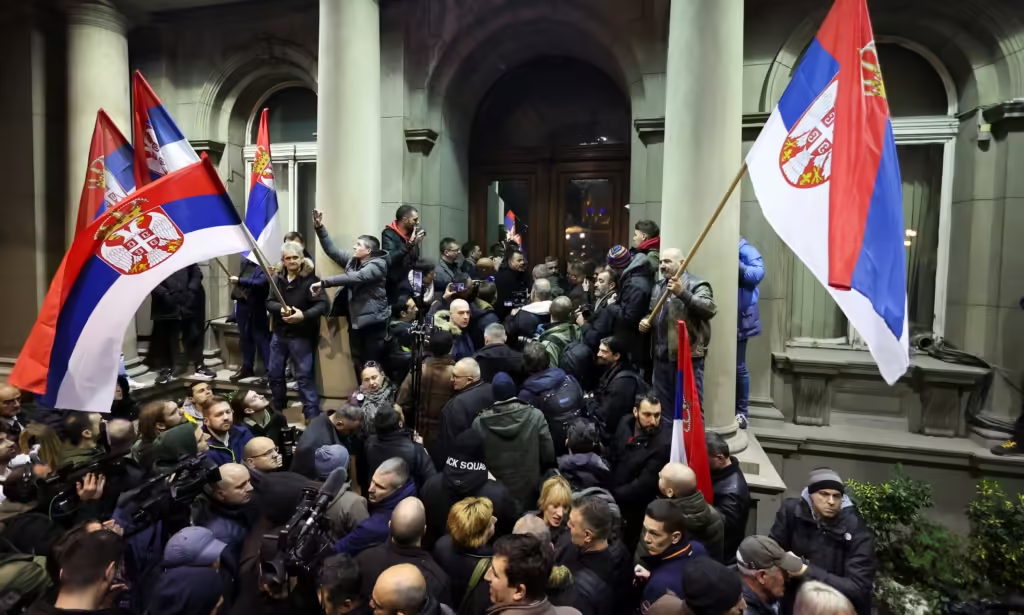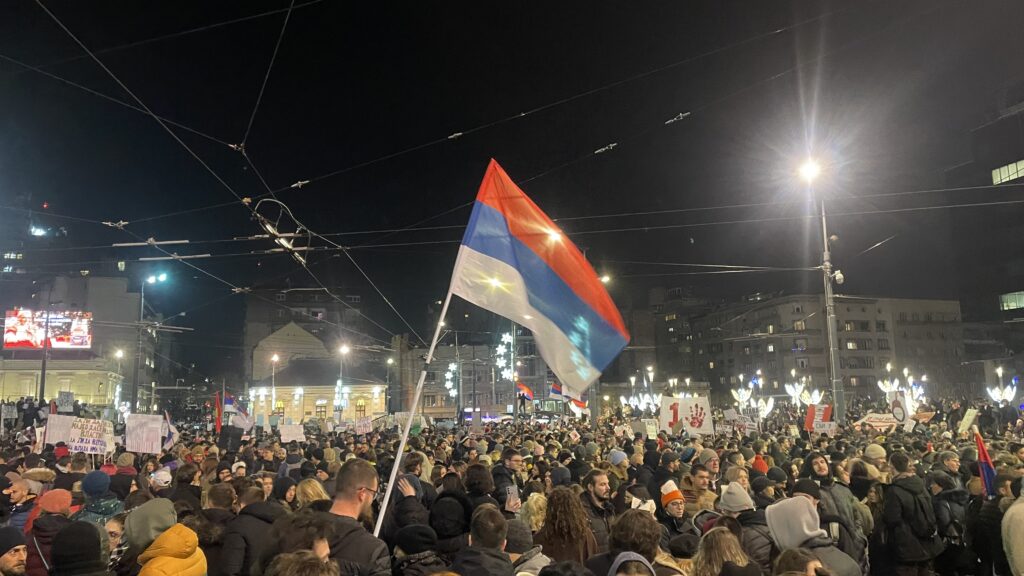
A spark has ignited in Belgrade, and the flames are spreading. Violent anti-government protests are shaking Serbia’s political foundations, raising serious questions about the country’s future stability and democratic trajectory.
The Anti-Government Protester’s Demands
A major catalyst for the protests was the collapse of a renovated train station canopy in Novi Sad in November 2024. This incident killed 16 people. with President Vucic accused of corruption. The movement, led by students and joined by educators, farmers, veterans, and opposition parties, is pressing four core demands:
Protesters are demanding that President Aleksandar Vučić call early parliamentary and Early presidential elections, moving them up from the scheduled 2027 date. They also seek clean, fair electoral practices with reforms such as updated voter records, equal media access, and safeguards against vote-buying.
Accountability for the Novi Sad disaster, publication of renovation documents and legal responsibility for those involved.
Education reforms, recognition of student bodies, increased university funding, and protection of academic autonomy.
Systemic change, dismantling entrenched corruption, ensuring media freedom, and ending government cronyism.
The Escalation of Violence of Anti-Government Protester’s
Thousands of demonstrators filled the streets across Serbia on Thursday for a third consecutive night, targeting the ruling party’s offices in Novi Sad, the city where the antigovernment revolt first erupted nine months ago.Protesters smashed windows, ransacked the Serbian Progressive Party (SNS) headquarters, carried out furniture and documents, and splashed paint across the entrance.
Chanting “He is finished” in reference to President Aleksandar Vučić, they declared their demand for early elections. The unrest followed earlier clashes this week that left dozens detained or injured. In Novi Sad, still scarred by last year’s canopy collapse, protesters overran offices with neither police nor Vučić’s supporters present.
In Belgrade, the Serbian capital, hundreds of protesters and SNS supporters threw flares and firecrackers at each other on one of the city’s main boulevards.

Police Response and Arrests
Police fired tear gas at least two locations to disperse the protesters and keep the opposing camps apart. Towns across the country held similar protests. Interior Minister Ivica Dacic said that 47 people were arrested in Wednesday’s clashes, with about 80 civilians and 27 police officers left injured.
At least five police officers were injured on Thursday evening and 14 protesters were arrested, Serbia’s interior ministry said, according to AFP news agency.
Government Reaction and Statements
Vucic told pro-government Informer television that “the state will win” as he announced a crackdown on antigovernment protesters, accusing them of inciting violence and of being “enemies of their own country”.
“I think it is clear they did not want peace and Gandhian protests. There will be more arrests,” he said during the broadcast.
The EU’s Commissioner for Enlargement Marta Kos said on X that the reports of violence were “deeply concerning”.
A group of UN human rights experts in August noted a “troubling pattern of repression” in the government’s response to the protests.
UN experts urged the Serbian Government to end all retaliation and intimidation. They called for protecting students, educators, activists, and citizens while engaging in genuine dialogue with academic institutions.
The violence in Belgrade underscores the urgent need for reform. The path forward requires accountability, transparency, and a commitment to building a more just and democratic society. Will Belgrade’s streets quiet, ushering in an era of reform, or will this violence beget more? Only time will tell what’s in store for Serbia’s future.
For more such informative articles stay tuned at The World Times.



